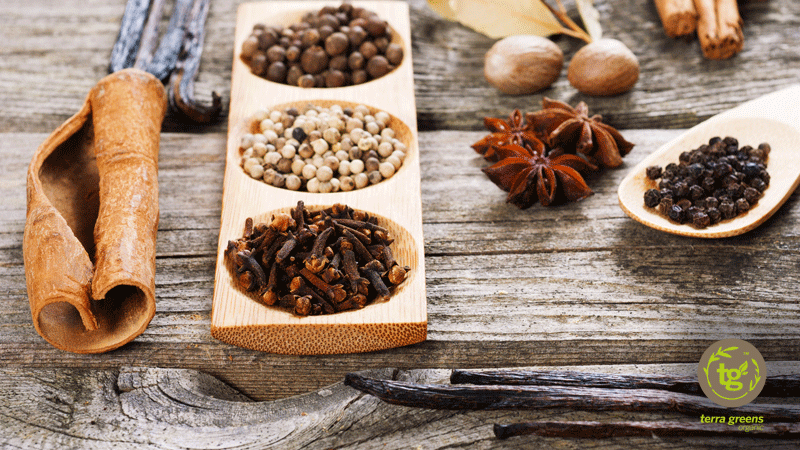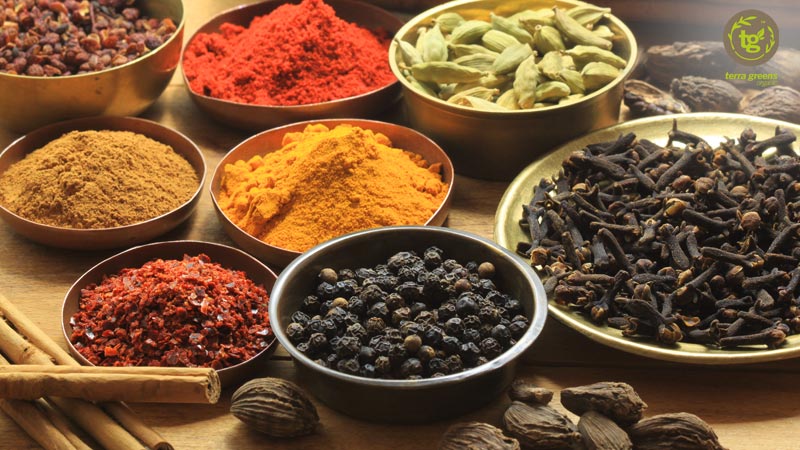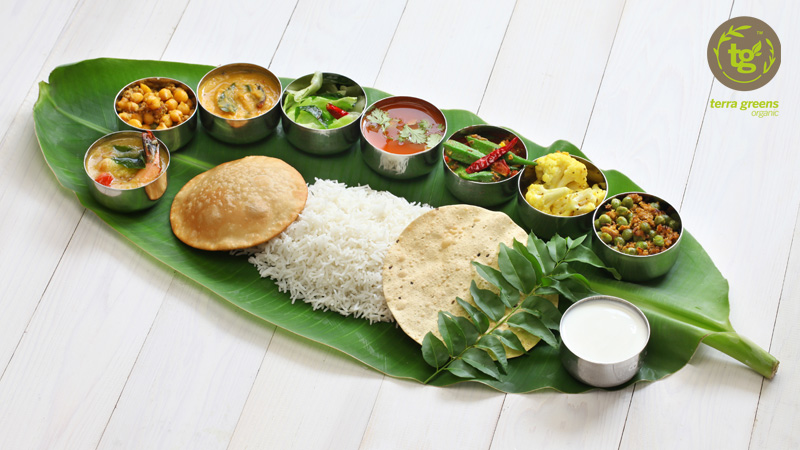We don’t blink an eyelid when it comes to self-medicating ourselves with OTC medicines and rush to the pharmacist at the slightest sneeze and the smallest rise in temperature.
Little do we realise during such panic trips and treatments that most ailments can be taken care of by things tucked right under our nose, in that kitchen cabinet.
What’s more, most health issues and lifestyle diseases can not only be treated but also proactively prevented by using just the right thing at the right time, in the right manner.
A kitchen is hard to imagine without spices, especially in Asian cuisine. These very spices pack a lot of powerful attributes and miraculous formula for helping us out with a stubborn cold, a rough skin or a stomach chaos.
Cloves, for example, are full of a paramount health-enhancing oil – eugenol. Such essential ingredients make them indispensable when it comes to an easy resource of antioxidant, antiseptic qualities. Like turmeric, cloves provide a reliable remedy with their antiseptic powers. Cloves are deservedly called the local anaesthetic, and their anti-inflammatory powers are sought by many for treating specific conditions. They are also highly rubefacient, thus helping intensively with a warming and soothing tendency that is enhanced with some associated benefits of being carminative, anti-mutagenic and anti-flatulent too. They are an easy way of improving digestion, of stimulating secretion of vital digestive enzymes and of controlling flatulence, gastric irritability, dyspepsia, and nausea.
Their role in improving digestion and curing minor digestive disorders is highly recognised. Their anti-microbial nature and a strong ability to fight cancer make them a favourite among many spices. They help in preserving bone quality, fortify the immune system and can restrain Diabetes very effectively. No doubt, they are the easy thing to reach out for when one has a headache, a stomach ache or simply needs an energy kick. Mix them in tea or a tasty concoction or whip them with some honey, and you are ready to take on a stress-filled world with confidence.
Cinnamon is another great spice within an easy reach. They are effective, anti-microbial and well-endowed when one wants to control blood sugar levels, and fight heart risk issues with formidable power. Their sweet, warm taste, smell, and flavour are very distinct and make them amenable to be used in a variety of formats. They are powerful antioxidants too. It is a bark full of healthy compounds like cinnamaldehyde, cinnamic acid, cinnamate, flavonoids, and antioxidants which make it a potent soldier against diabetes, and immunity related problems.
Similarly, a common spice which we know as Black Pepper and use as either corn or ground powder is useful for its antibacterial characteristics. It’s hot and pungent flavour is not only instrumental in its special taste and use for cooking but is also effective in various health areas. It is believed that piperine in black pepper is a crucial component for amplifying its core quality – the ability of the body to absorb a certain amount of a nutrient or supplement. This quality becomes pronounced in the case of nutrients such as vitamins A and C, selenium, beta-carotene where this spice helps actively. With its innate ability to cut down intestinal activity, and thus, in the prevention of the removal of substances from cells while also aiding in better digestion- this spice becomes indispensable. That’s why it is used to cure stomach disorders like colic, bloating, indigestion, flatulence, and constipation. But this very spice also ensures that more and more substances which arrive in the body are retained in active form and with high availability for their core use.
So grab that wonder bottle standing right around you and look at your kitchen cabinet in a fresh way before running towards a medical store in confusion. For best results, never forget to consume organic spices.
Author: admin
INDIAN SPICES : THE MEDICAL KIT IN OUR KITCHEN
INDIAN SPICES : THE MEDICAL KIT IN OUR KITCHEN
Turns out that the humble “masala dabba”, the box which contains various Indian spices, proudly carrying its badge of turmeric and chilli powder stains, is no less a warrior than the medical bag that the family doctor of old carried with him on his home visits. Also turns out that Grandma’s old remedies maybe old but are of relevance and importance in today’s pill popping world.
Let’s just look at a few of the occupants of the masala dabba:
Turmeric: not just vibrant colour
Turmeric powder is made from the boiled and dried rhizome (stem) of the turmeric plant. You cannot imagine Indian dishes without adding at least a little of this deep yellow coloured powder.
I can still remember my grandma adding “haldi”(turmeric) to warm water and making me sip it to ease the colic that was the outcome of eating one too many goodies on Diwali day. Turmeric is good for digestion. This is probably why it found its place in everyday use in Indian and Asian kitchens.
It has long been used by the Chinese to treat depression. Turmeric is a great antibacterial and antiseptic agent and it is 100% natural. Even today a paste made of this spice and water is used to cure cuts and burns. This is also the reason that it is added to face packs and is a good way to deal with acne.
It is a potent anti-inflammatory with none of the side effects that the use of such drugs can cause you. This makes turmeric useful in fighting arthritis and rheumatoid arthritis. Turmeric is a natural way to detoxify your liver.
Research has also indicated that the everyday use of turmeric in Indian kitchens is probably the reason for the low incidence of Alzheimer’s disease in India: less than one fourth of the USA for the people in their 7th decade of life.
Pepper up your life
Black is the “in” colour in your kitchen too. Pepper is the fruit of the black pepper plant and is native to Kerala. It has a tantalizing aroma – never mind the sneezes! The chemical piperine is what gives pepper its spiciness. Black pepper is at its best when ground afresh.
Age old relief from colds and coughs always meant a teaspoon of honey with crushed pepper. Pepper powder added to hot water and eucalyptus makes an effective inhalation for de-congestion when you have a bout of the ‘flu or respiratory discomfort from the increasing levels of pollution and allergies.
It is rich in manganese, iron, potassium, Vitamin C, Vitamin K and dietary fiber. Also, stimulates digestion by stimulating the secretions from the taste buds which “message” the stomach to produce the protein digesting hydrochloric acid.
It is also a great anti-bacterial and this makes it a good food preservative. A pinch of freshly ground black pepper can help in weight loss: the skin of the pepper pod has phytonutrients which increase metabolic rate and fight fat. Hard to believe but a touch of black pepper in your face pack can be a great exfoliator. Black pepper extracts are, in fact, used to fight vitiligo, a skin condition where loss of pigmentation results in white patches.
The goodness of turmeric is enhanced if it is used in combination with black pepper.
A cinnamon stick will do the trick
You‘re barking up the wrong tree if you think cinnamon is just good for its appetizing smell and that dash of pungency in your dish. This inner bark of some species of this tree improves digestion. It also soothes that irritated and tender stomach following a bout of tummy trouble.
Just mix a little cinnamon powder with a tablespoon of curd.
Cinnamon is anti-bacterial and anti-allergic and is, thus, a good preservative. It is also anti- inflammatory. 1 tablespoon of cinnamon contains about 1.4 mg of manganese: this is really helpful in preventing osteoporosis especially in women. Research has also shown that it aids in controlling heart disease and diabetes because of its cinnemaldehyde and cinnamic acid content.
The aroma of this spice makes for a great mood enhancer.No wonder that cinnamon bun is no less upifting than that spicy aftershave!
Cloves: small buds, mammoth benefits
The punch that these little buds carry are what makes them an indispensable ingredient when spice is what is nice. In addition to being a must in exotic oriental cooking, here’s what cloves can do:
Fight oral infections and relieve pain. This is why clove oil is the central theme in many a toothpaste advertisement. This antimicrobial property also makes them great for the immune system. In fact, they as antimicrobials, combat serious disease like Cholera.
Cloves and its extracts are very effective in maintaining heart health by containing LDL cholesterol levels and preventing the formation of blood clots.
The eugenol in cloves is beneficial to the liver: it prevents the formation of a fatty liver and, thus, enhances liver function. It arrests cirrhosis which can be a precursor to cancer.
Clove oil is also EXTREMELY strong and should be used with great care. Better then, don’t you think, to introduce a few buds in your recipes and reap the benefits in the course of a meal?
There’s an old and wise saying: “You are what you eat.”
So when you want to eat well, eat wisely too. Include these common ingredients not just in your kitchen but in your medical kit, to lead a healthier drug-free life. When you cure naturally, you benefit doubly because there are no side effects.
5 BOOKS EVERY INDIAN SHOULD READ TO UNDERSTAND INDIAN FOOD SYSTEM
5 BOOKS EVERY INDIAN SHOULD READ TO UNDERSTAND INDIAN FOOD SYSTEM
Indian cuisine changes considerably from region to region depending on the accessibility of ingredients and also seasonality. It is one of the world’s oldest systems of food that recognizes not only the culinary aspects but also imbibes in its fold the traditional Ayurvedic system. Indian food system is wise in its approach to meet the taste as well as the health goals of individuals.
We bring to you India’s foremost thinkers and researchers who have studied Indian food system in depth and have written books that have a contemporary flavour to them, appealing to the new age minds. Take your pick.
Don’t Lose Your Mind, Lose Your Weight – By Rujuta Diwekar
Rujuta is a celebrity fitness expert to whom many Bollywood actors and actresses owe their great shape and health to, the list includes superstars like Kareena Kapoor, Saif Ali Khan, Anupam Kher and many others. As a leading nutritionist, Diwekar is against the idea of crash diets prescribed by dieticians that looms over carb-starvation, unnecessary food cravings and things which ultimately lead to a food deprived body.
Throughout the book, she extols the invaluable wisdom behind Indian system of food and how a balanced Indian meal can go a long way in maintaining one’s health at its peak condition.
Cultural History of India – By Om Prakash
Apart from different cultural aspects, the book discusses the dietary system of Indians from pre-historic times to C. 1200 A.D. The reason for the inclusion of food and drinks in the book on Indian culture is that, ancient Indians believed that food not only kept an individual healthy but was also responsible for his mental make-up. The author stresses that it is of utmost importance that the present generation imbibes those elements of Indian culture which have kept India vital and going through its long and continuous history.
The Penguin Food Guide to India – By Charmaine O’Brien
O’Brien, an Australian writer and culinary historian, first visited India in 1995. She has visited every state in India since then. The book is her journey of discovery born out of the fundamental truth that India does not have one single homogenous cuisine. The greatness of its food lies in its enormous variety and subtlety.
Her goal in her own words “was to create a historical and cultural guide to India’s regional cuisine and to recommend places where domestic tourist or international visitors could find distinct regional food.” She helps readers with the tools to experience genuine, local flavours.
Indian Food: A Historical Companion – By K.T. Achaya
The book outlines the enormous variety of cuisines, food materials and dishes that together are referred to as ‘Indian food’. The book draws upon material from a variety of sources including literature, archaeology, epigraphic records, anthropology, philology, and botanical and genetic studies. It gives interesting facts pertaining to the origins and evolution of Indian food.
A chapter is entirely dedicated to regional cuisines. The theories and classification of food as codified by ancient Indian doctors like Charaka, Sushrutha, and Bhagvata, find detailed references in the book. The book takes a look at the history of meat eating and the consumption of alcoholic beverages, and the gradual shift towards vegetarianism due to Hinduism Jainism, an account of the sophisticated cooking accoutrements like baking oven, liquor distillation unit, the etymology of food-words and much more. All in all, it’s one of the must-read books for any Indian wanting to know the rich cultural Indian food heritage of India.
India’s Organic Farming Revolution – By Sapna E. Thottathil
There are simply too many questions about organic food. Is it good for all of us as is proclaimed by some or is GMO the solution to hunger? Sapna picks Kerala as the case study: a State where the so-called “Green Revolution” program with hybrid seeds, synthetic fertilizers, and rising pesticide use failed to reduce hunger. It instead caused a vicious cycle of economic, medical, and environmental problems.
Farmers burdened with huge debts from buying the new seeds and chemicals were committing suicide. Farm labourers suffered from pesticide poisoning and there was a rise in the rate of birth defects. A fall in biodiversity worried environmental activists. Finally, farmers, environmentalists, and policymakers drew on Kerala’s history and its commitment to grassroots democracy and enacted a policy that requires Kerala growers to farm organically by 2020. The book draws some highly valuable extrapolations for our global food systems as well with Indian food and agriculture system as the basis.
One at a time, take your pick and dwell into what could probably become mainstream reading for students and academicians in the forthcoming days.



